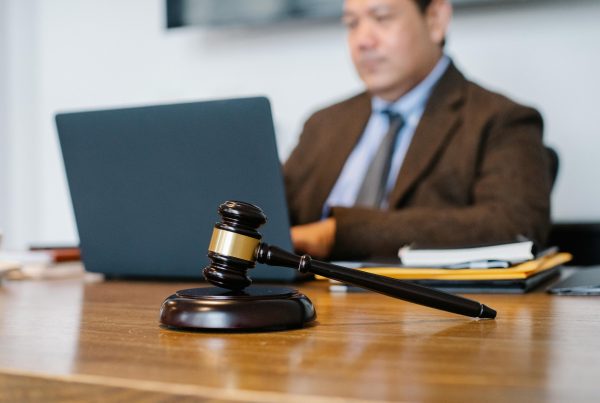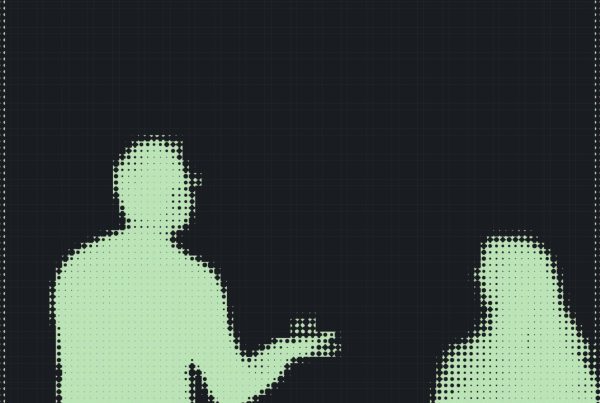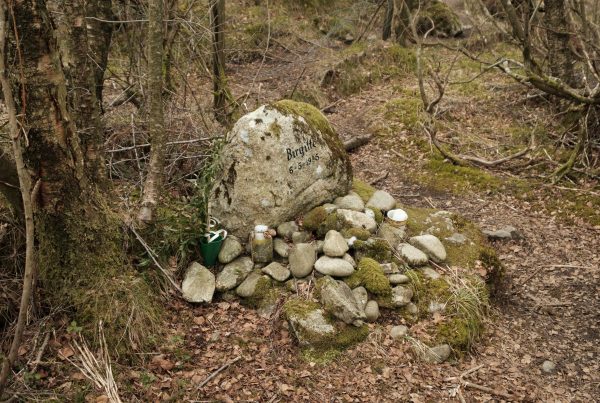The subject matter of this article pertains specifically to a Norwegian issue – namely, the limited use of recording equipment in Norwegian courtrooms. We believe that this represents a universal challenge that are being increasingly magnified by advances in AI technology. It is our conviction that the discussions raised in this article resonate beyond the borders of Norway, bearing relevance and significance to a global audience.
The following article is an English translation of an op-ed piece by Davidhorn’s CEO Børge Hansen that was first published in the Norwegian daily newspaper, Dagsavisen, on the 30th of June, 2023. (https://www.dagsavisen.no/debatt/2023/06/30/derfor-bidrar-teknologi-til-bedre-rettssikkerhet/)
This article serves as a response to a previous op-ed feature in the same paper, authored by the distinguished Norwegian journalist and writer, Bjørn Olav Jahr; “The sound of Injustice”. (https://www.dagsavisen.no/debatt/kommentar/2023/06/16/lyden-av-urett/)
It is widely acknowledged that advances in DNA technology have played a pivotal role in addressing miscarriages of justice. Simultaneously, it is clear that the employment of audio and visual recordings during police interrogations bolsters the fundamental rights of citizens.
Norwegian journalist and author Bjørn Olav Jahr raises pertinent questions in his article, “The Sound of Injustice” published in Dagsavisen on June 16. Notably, why has funding not yet been allocated to record criminal trials in Norwegian law?
Through his work on the Tengs and Baneheia cases (recent, high-profiled Norwegian examples of miscarriages of justice), Jahr has attained a unique insight into the systemic flaws in the Norwegian legal system. His warnings, therefore, should not go unnoticed. Indeed, he garners substantial support from the legal community: Tonje Vang, the presiding judge quoted in Jahr’s article, says, “Norway is falling behind in critical areas of justice.”
The role of technology in justice-related matters should not be underestimated. Yet, despite mandates dating back to 2005 from the the Norwegian Parliament (Stortinget), Norway has not fully implemented audio and visual recording in its courtrooms.
The lack of implementation and use of recording equipment in Norwegian law is hardly surprising, given the ambiguously worded legislation: The Regulations on Recording in Court, dating from October 2018, state that the court may employ audio and visual recordings under the Criminal Procedure Act or the Dispute Act, “if there is equipment for it.” Hence, the presence or absence of recording is directly linked to the availability of recording equipment. This fact is both straightforward and deeply concerning.
The Royal Commission on Criminal Procedure Report in 1981, spurred by significant miscarriages of justice in the UK during the 1970s and 80s, concluded that police interrogation practices needed to change and that these interrogations must be recorded. This report laid the groundwork for a unique collaboration between researchers and British police, leading to the development of a research-based method for modern interrogation—a method adopted in Norway and lectured across the globe by internationally recognised police researchers Asbjørn Rachlew and Ivar Fashing.
The lack of recorded interrogations in combination with manipulative interrogation techniques has precipitated miscarriages of justice in many countries. These techniques and recordings came too late to prevent the miscarriages of justice in the Baneheia and Birgitte Tengs cases in Norway. It’s indicative that the Retrial Commission’s minority in the Baneheia case tried to argue against a retrial based on outdated, inaccurate newspaper court reports.
The focus should not be on whether court cases should be recorded, but on the type of recording technology that can best address the challenges of an increasingly technologically advanced future.
The pace of technological advancement today is rapid. The exponential growth of artificial intelligence is no longer exclusive to high-tech professional environments but is becoming more widespread and being integrated into various types of software and accessible internet platforms. While there is a significant level of optimism and interest in the opportunities that artificial intelligence offers, it presents challenges for evidence, authenticity, and justice concerning audio and visual recordings: manipulations, such as voice cloning and video alterations (so-called deep fakes), becomes easier.
This puts demanding requirements on the audio-visual technology solutions currently used by the Norwegian police, among others. How do we safeguard these recordings from potential manipulation, whether they are made in an interrogation room, a crime scene, or a courtroom? The term “tamper-proof” is key. The ever-present fear is that the truth will be distorted.
Based in Grimstad, Norway, Indico has been a European leader in interrogation room recording technology for several decades. The company has followed in the footsteps of earlier mentioned police officers like Rachlew and Fahsing and Britain’s David Horn. Norway excels in scientific methods and technology. However, we lag behind in the implementation within Norwegian courtrooms. In 2019, Indico/Davidhorn partook in a pilot project for court recording in the Nord-Troms District Court, which was not followed up.
There is technology readily available to facilitate justice in Norwegian courtrooms. Introducing recording equipment is largely a matter of political will to allocate funds and the capacity to implement. An old Norwegian proverb warns, “You can save yourself into poverty.” But one might also add that one can save oneself into further miscarriages of justice.



